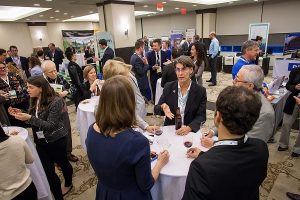Tag: be-nyc
December 27, 2016
Energy Efficiency: It’s All About the People
By Pamela Berns
After attending four panel discussions and taking several turns around vendor exhibit floor of the 2016 BuildingEnergyNYC conference, one thing became perfectly clear. When it comes to sustainability and energy efficiency, there is no shortage of tools: codes, incentives, certifications, technology, data collection, and some incredibly innovative products and services. But the biggest takeaway was the the need to clearly decipher this complex landscape in order to achieve meaningful behavior change among all the stakeholders involved. Said Saheel Chandrani, Senior Account Executive at Johnson Controls, “The big thing we miss out on is the people.” The Challenge According to Richard Yancey, Executive Director of the Building Energy Exchange, “The educational issue is a big component” in achieving sustainability compliance among building owners. “People are scared of doing things differently.” Mike Davis, Senior Program Officer at the Local Initiative Support Corporation (LISC), feels it’s especially important to provide a clear understanding of available resources in order to help owners “navigate the space.” Chandrani described things from the tenant’s viewpoint: “How do you use energy data to get people to care? That’s the hardest part.” Showcasing the success of New York City’s increasingly stringent energy codes is an effective way to reinforce positive behaviors already taking form. Sean Brennan, Research Manager at the Urban Green Council said, “The key is making sure the message gets out to the public, so they know it’s working.” But Roya Kazemi, Director of the GreeNYC program at Mayor’s Office of Sustainability, sees “voluntary behavior change as the missing part as the code gets developed.” Danielle Spiegel-Feld, Executive Director at the Guarini Center on Environmental, Energy and Land Use Law, NYC School of Law, is concerned that there’s “very little knowledge in consumer markets that the data even exists.” One reason she says is that “it’s buried” on the “not user-friendly, not heavily trafficked New York City Department of Finance website.” Messaging Do’s and Don’ts In addition to creating platforms for more for accessible information, framing the story in a context that stakeholders can relate to is key. Kazemi said that the environmental message isn’t always effective and that “being heavy handed with guilt and fear and shame doesn’t work.” Yancey warned against a “saving the polar bears” message for tenants, and suggested a focus on benefits such as comfort and well-being. Phil Madnick, Program Manager at Con Edison’s Multifamily Energy Efficiency program, cautioned against “go[ing] in there and talk[ing] about climate change” with building managers, who are more interested in the bottom lin. Loic Chappoz, Project Manager at NYSERDA, believes that property owner-managers will “respond to a good business case.” And Kazemi stressed the importance of making “wonky academic speak accessible” to all stakeholders. (more…)December 1, 2016
Building Energy NYC: Sustainable Solutions for New York City
by Kimberly Stempien Imagine a city with clean air, solar energy, plenty of pedestrian spaces and no cars. It’s not at all far-off; these are all on the agenda for New York City in coming years. In fact, some of the projects are already in progress. The Northeast Sustainable Energy Association held their annual Building Energy NYC conference on November 3, bringing together leaders in energy, building maintenance, real estate, policy, product, and new technologies. Many topics were discussed, but three of the main takeaways were long term planning, regional-district planning, and enhanced resiliency for the city of New York. In a talk by Jenna Tatum, Kate Gouin, Benjamin Mandel and John Lee from the NYC Mayor’s Office of Sustainability, the focus was on 80×50, the de Blasio administration’s commitment to reduce GHG emissions 80% from 2005 levels by 2050 (80×50). NYC’s Sustainability 80X50 plan states, “It is the level the UN projects is necessary to avert the most disastrous impacts of climate change.” The plan is essentially a roadmap that is broken into four areas of focus: Buildings, Energy Supply, Waste, and Transportation, with comprehensive reporting and modeling done for each category. Following are the four main takeaways of the plan’s goals in each sector. (more…)September 27, 2015
The Green Spotlight on BE NYC: Rebecca Marshall
 Rebecca Marshall’s Mantra:
“Sustainability has no boundaries.”
By Pamela Berns
“Sustainability doesn’t have boundaries.” That’s Rebecca Marshall ‘s mantra. On October 15, Rebecca, who is the Javits Center’s Energy and Sustainability Manager, will spread the wisdom as she shares the in-depth sustainability story behind the Center’s recent renovation. Rebecca is an upbeat person with a serious mission: to expand the boundaries of sustainability well beyond the Center’s 840,000 square feet of exhibit space. While she monitors the building’s resource consumption and engages employees internally, she also works to help customers exhibit responsibly and strives to ensure that the Javits Center is a “good neighbor” to the buildings that are rapidly going up in the adjacent Hudson Yards. She’s also works to extend a green welcome to New York City tourists, and even helps provide a safe haven for the local wildlife population. And she shares a commitment with others in her field to improve and increase sustainability in the events and conventions industry.
(more…)
Rebecca Marshall’s Mantra:
“Sustainability has no boundaries.”
By Pamela Berns
“Sustainability doesn’t have boundaries.” That’s Rebecca Marshall ‘s mantra. On October 15, Rebecca, who is the Javits Center’s Energy and Sustainability Manager, will spread the wisdom as she shares the in-depth sustainability story behind the Center’s recent renovation. Rebecca is an upbeat person with a serious mission: to expand the boundaries of sustainability well beyond the Center’s 840,000 square feet of exhibit space. While she monitors the building’s resource consumption and engages employees internally, she also works to help customers exhibit responsibly and strives to ensure that the Javits Center is a “good neighbor” to the buildings that are rapidly going up in the adjacent Hudson Yards. She’s also works to extend a green welcome to New York City tourists, and even helps provide a safe haven for the local wildlife population. And she shares a commitment with others in her field to improve and increase sustainability in the events and conventions industry.
(more…)
October 14, 2013
The Green Spotlight on BE NYC: Tom Thompson
BE NYC is almost here! With only day until the conference, GreenHomeNYC is shining the spotlight on the experts who will be making the BE NYC an exceptional industry event!
One of the professionals participating in the conference is Tom Thompson.
day until the conference, GreenHomeNYC is shining the spotlight on the experts who will be making the BE NYC an exceptional industry event!
One of the professionals participating in the conference is Tom Thompson.
 Tom Thompson is the Director of Business Development for Advanced Solar Products, Inc. and has over 30 years’ experience in the energy industry. He is active in the renewable energy sector, via his involvement with organizations such as the NY Solar Energy Industries Association (NYSEIA), the NY Solar Energy Society (NYSES), and the Solar Energy Business Association of New England (SEBANE).
In addition to being a lifetime member of NESEA, Tom served as Executive Director of the organization from 1995 to 2000.
Tom is a co-chair of the Renewables and Resilience track with Scott Schultz.
How would you describe your work with Advanced Solar Products, Inc.?
I’m the Business Development Director for Advanced Solar Products, which is one of the oldest and most innovative solar businesses in America. My responsibilities include commercial- and utility-scale photo voltaic development in the Northeast. One of my focuses is seeking out solar projects and client opportunities. The job is a balance between technical and financial objectives, as well as developing connections with people
(more…)
Tom Thompson is the Director of Business Development for Advanced Solar Products, Inc. and has over 30 years’ experience in the energy industry. He is active in the renewable energy sector, via his involvement with organizations such as the NY Solar Energy Industries Association (NYSEIA), the NY Solar Energy Society (NYSES), and the Solar Energy Business Association of New England (SEBANE).
In addition to being a lifetime member of NESEA, Tom served as Executive Director of the organization from 1995 to 2000.
Tom is a co-chair of the Renewables and Resilience track with Scott Schultz.
How would you describe your work with Advanced Solar Products, Inc.?
I’m the Business Development Director for Advanced Solar Products, which is one of the oldest and most innovative solar businesses in America. My responsibilities include commercial- and utility-scale photo voltaic development in the Northeast. One of my focuses is seeking out solar projects and client opportunities. The job is a balance between technical and financial objectives, as well as developing connections with people
(more…)
The Green Spotlight on BE NYC: Steve Bluestone
Countdown to BE NYC! With only days until the conference, GreenHomeNYC is shining the spotlight on the experts who will be making the BE NYC an exceptional industry event!
One of the professionals participating in the conference is Steve Bluestone.
days until the conference, GreenHomeNYC is shining the spotlight on the experts who will be making the BE NYC an exceptional industry event!
One of the professionals participating in the conference is Steve Bluestone.
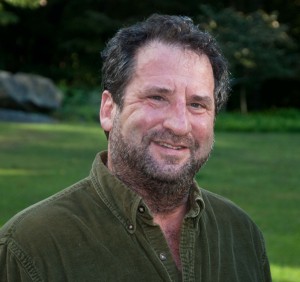 Steve Bluestone is a partner in The Bluestone Organization, a real estate development, contracting, and property management firm founded by his grandfather, Jacob Bluestone, in 1927. Mr. Bluestone studied architecture and passive and active solar energy systems, earning a B.S. in environmental science from Marlboro College. Since entering the construction and development industry, he has led his firm’s efforts on research and implementation of green building design. Using off-the-shelf components, the firm produced a 50-unit rental building that was hailed as “the most energy efficient multi-family building in New York State with four or more units,” and did so at conventional construction cost levels. Steve lives with his wife in Westchester County in a passive solar, geothermally-heated and cooled home that they designed and built in 2000. They are in the process of building an innovative new house upstate that is destined to be net zero energy and Passive House certified.
Steve is a speaker within the Small Buildings Track of BuildingEnergy NYC 2013.
(more…)
Steve Bluestone is a partner in The Bluestone Organization, a real estate development, contracting, and property management firm founded by his grandfather, Jacob Bluestone, in 1927. Mr. Bluestone studied architecture and passive and active solar energy systems, earning a B.S. in environmental science from Marlboro College. Since entering the construction and development industry, he has led his firm’s efforts on research and implementation of green building design. Using off-the-shelf components, the firm produced a 50-unit rental building that was hailed as “the most energy efficient multi-family building in New York State with four or more units,” and did so at conventional construction cost levels. Steve lives with his wife in Westchester County in a passive solar, geothermally-heated and cooled home that they designed and built in 2000. They are in the process of building an innovative new house upstate that is destined to be net zero energy and Passive House certified.
Steve is a speaker within the Small Buildings Track of BuildingEnergy NYC 2013.
(more…)
October 9, 2013
The Green Spotlight on BE NYC: Sam Weisenberg
Countdown to BE NYC! With only days until the conference, GreenHomeNYC is shining the spotlight on the experts who will be making the BE NYC an exceptional industry event!
One of the professionals participating in the conference is Sam Weisenberg.
days until the conference, GreenHomeNYC is shining the spotlight on the experts who will be making the BE NYC an exceptional industry event!
One of the professionals participating in the conference is Sam Weisenberg.
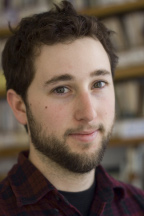 Sam Weisenberg is a Heating Specialist at Bright Power. Mr. Weisenberg troubleshoots, optimizes, and designs stream and hot water heating systems. He is an Association of Energy Engineers (AEE) Certified Building Commissioning Professional. Sam is also a Building Performance Institute (BPI) Certified Multifamily Building Analyst (MFBA). In his free time, Mr. Weisenberg plays percussion, guitar, and steel guitar. Sam enjoys cooking and volunteers doing bike repair.
Sam is a speaker within the Commercial/Institutional Track of BuildingEnergy NYC 2013.
What brought you to your current position?
My mother and stepfather liked to move homes, so I grew up ripping our houses apart. I worked through college doing electrical trades and a lot of woodworking. Then I worked for a lighting designer and cabinet maker for a while. After that, I joined Bright Power and have been enamored with heating systems ever since.
(more…)
Sam Weisenberg is a Heating Specialist at Bright Power. Mr. Weisenberg troubleshoots, optimizes, and designs stream and hot water heating systems. He is an Association of Energy Engineers (AEE) Certified Building Commissioning Professional. Sam is also a Building Performance Institute (BPI) Certified Multifamily Building Analyst (MFBA). In his free time, Mr. Weisenberg plays percussion, guitar, and steel guitar. Sam enjoys cooking and volunteers doing bike repair.
Sam is a speaker within the Commercial/Institutional Track of BuildingEnergy NYC 2013.
What brought you to your current position?
My mother and stepfather liked to move homes, so I grew up ripping our houses apart. I worked through college doing electrical trades and a lot of woodworking. Then I worked for a lighting designer and cabinet maker for a while. After that, I joined Bright Power and have been enamored with heating systems ever since.
(more…)
October 7, 2013
The Green Spotlight on BE-NYC: Marc Zuluaga
Countdown to BE NYC! With only days until the conference, GreenHomeNYC is shining the spotlight on the experts who will be making the BE NYC an exceptional industry event!
One of the professionals participating in the conference is Marc Zuluaga.
days until the conference, GreenHomeNYC is shining the spotlight on the experts who will be making the BE NYC an exceptional industry event!
One of the professionals participating in the conference is Marc Zuluaga.
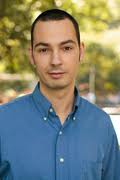 As a VP and Director of Steven Winter Associates’s Multifamily Energy Services, Marc Zuluaga has directed energy audits on over 20 million square feet of existing buildings and leads a team committed to applying a rigorous technical approach to the evaluation and implementation of a wide range of building upgrades. Marc has worked since 2005 to pioneer a retrofit approach to central exhaust ventilation systems in multifamily buildings, working openly and collaboratively with practitioners across the country. More recently, in research sponsored by the Urban Green Council, Mr. Zuluaga acted as the team leader on a project to quantify the winter heat loss due to air leakage around window and sleeve air conditioners in NYC. Mr. Zuluaga has also provided technical input to inform various policy initiatives; in 2010, he served on the NYC Green Codes Task Force that was convened by the Mayor’s Office to recommend green changes to the laws and regulations affecting buildings in New York.
Marc is a speaker within the Commercial/Institutional Track of Building Energy NYC 2013.
(more…)
As a VP and Director of Steven Winter Associates’s Multifamily Energy Services, Marc Zuluaga has directed energy audits on over 20 million square feet of existing buildings and leads a team committed to applying a rigorous technical approach to the evaluation and implementation of a wide range of building upgrades. Marc has worked since 2005 to pioneer a retrofit approach to central exhaust ventilation systems in multifamily buildings, working openly and collaboratively with practitioners across the country. More recently, in research sponsored by the Urban Green Council, Mr. Zuluaga acted as the team leader on a project to quantify the winter heat loss due to air leakage around window and sleeve air conditioners in NYC. Mr. Zuluaga has also provided technical input to inform various policy initiatives; in 2010, he served on the NYC Green Codes Task Force that was convened by the Mayor’s Office to recommend green changes to the laws and regulations affecting buildings in New York.
Marc is a speaker within the Commercial/Institutional Track of Building Energy NYC 2013.
(more…)
October 3, 2013
Countdown to BuildingEnergy NYC
For 2013, a bigger, more diverse conference Discover how your buildings can be energy efficient, resilient and profitable at BuildingEnergy NYC (BE NYC) on Wednesday, October 16, 2013. With 24 fully-accredited sessions (AIA, BPI & USGBC) and five pre-conference workshops on October 15th, you’ll be able to cover timely topics like next steps in renewables, addressing air leakage in large buildings, new NYC Codes for resilience, cogeneration and more.
We’ve got an outstanding group of speakers for BE NYC. Here’s a sample:
Les Bluestone, Blue Sea Development
Warren Liebold, NYC Department of Environmental Protection
Pat Logan, Enterprise Community Partners
Dan Rieber, Northern Manhattan Improvement Corporation
Scott Schultz, Advanced Solar Products
Steven Winter, Steven Winter Associates
Get equipped with practical information and inspired for a sustainable future.
Register HERE
BE NYC is co-presented by GreenHomeNYC the Northeast Sustainable Energy Association, and enjoys sponsorship from such notable organizations as The Community Preservation Corporation, The Natural Resources Defense Council, NYSERDA, ConEdison, NixonPeabody and The Bluestone Organization.
Discover how your buildings can be energy efficient, resilient and profitable at BuildingEnergy NYC (BE NYC) on Wednesday, October 16, 2013. With 24 fully-accredited sessions (AIA, BPI & USGBC) and five pre-conference workshops on October 15th, you’ll be able to cover timely topics like next steps in renewables, addressing air leakage in large buildings, new NYC Codes for resilience, cogeneration and more.
We’ve got an outstanding group of speakers for BE NYC. Here’s a sample:
Les Bluestone, Blue Sea Development
Warren Liebold, NYC Department of Environmental Protection
Pat Logan, Enterprise Community Partners
Dan Rieber, Northern Manhattan Improvement Corporation
Scott Schultz, Advanced Solar Products
Steven Winter, Steven Winter Associates
Get equipped with practical information and inspired for a sustainable future.
Register HERE
BE NYC is co-presented by GreenHomeNYC the Northeast Sustainable Energy Association, and enjoys sponsorship from such notable organizations as The Community Preservation Corporation, The Natural Resources Defense Council, NYSERDA, ConEdison, NixonPeabody and The Bluestone Organization.
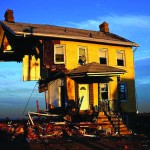 Hurricane Sandy: Point Taken – read Conference Chair Andy Padian’s BuildingEnergy Magazine
story on urban resilience.
Hurricane Sandy: Point Taken – read Conference Chair Andy Padian’s BuildingEnergy Magazine
story on urban resilience.
September 29, 2013
The Green Spotlight on BE NYC: Henry Gifford
Countdown to BE NYC! With only days until the conference, Greenhome NYC is shining the spotlight on the experts who will be making the BE NYC an exceptional industry event!
One of the professionals participating in the conference is Henry Gifford.
days until the conference, Greenhome NYC is shining the spotlight on the experts who will be making the BE NYC an exceptional industry event!
One of the professionals participating in the conference is Henry Gifford.
 Henry Gifford is director of mechanical system design at Architecture and Energy Limited, a Manhattan firm that designs buildings that are very energy efficient, yet cost no extra to build. He is a longtime practitioner in the Building Science and energy efficiency fields, specializing in multifamily buildings, and thinks one good measurement is worth a thousand expert opinions.
Henry is a speaker in the “One Pipe, Two Pipe” workshop in the Smaller Buildings track.
How did you become focused on this particular area of sustainability?
When I was 20 years old I bought two apartment buildings in the Lower East Side. They were expensive to run, and I knew I couldn’t lower the mortgage payments, taxes, or insurance; and I couldn’t raise the rent. So I started to see what I could do about paying less to Con Edison. I could see that my bills went up and down, jumped around a lot – even in summer. I called the service company for them to send someone out to check the boiler. He barely stepped into the boiler room, glanced at the flame and said “Yeah, it’s efficient.” I knew that he knew more than I did, but that there had to be more to it than that. Pretty soon I became more interested in spending time in boiler rooms than in housing court. (more…)
Henry Gifford is director of mechanical system design at Architecture and Energy Limited, a Manhattan firm that designs buildings that are very energy efficient, yet cost no extra to build. He is a longtime practitioner in the Building Science and energy efficiency fields, specializing in multifamily buildings, and thinks one good measurement is worth a thousand expert opinions.
Henry is a speaker in the “One Pipe, Two Pipe” workshop in the Smaller Buildings track.
How did you become focused on this particular area of sustainability?
When I was 20 years old I bought two apartment buildings in the Lower East Side. They were expensive to run, and I knew I couldn’t lower the mortgage payments, taxes, or insurance; and I couldn’t raise the rent. So I started to see what I could do about paying less to Con Edison. I could see that my bills went up and down, jumped around a lot – even in summer. I called the service company for them to send someone out to check the boiler. He barely stepped into the boiler room, glanced at the flame and said “Yeah, it’s efficient.” I knew that he knew more than I did, but that there had to be more to it than that. Pretty soon I became more interested in spending time in boiler rooms than in housing court. (more…)
September 26, 2013
Hurricane Sandy: Point Taken
As cleanup efforts continue, fast-growing BuildingEnergy NYC is all about resilience By F. L. Andrew Padian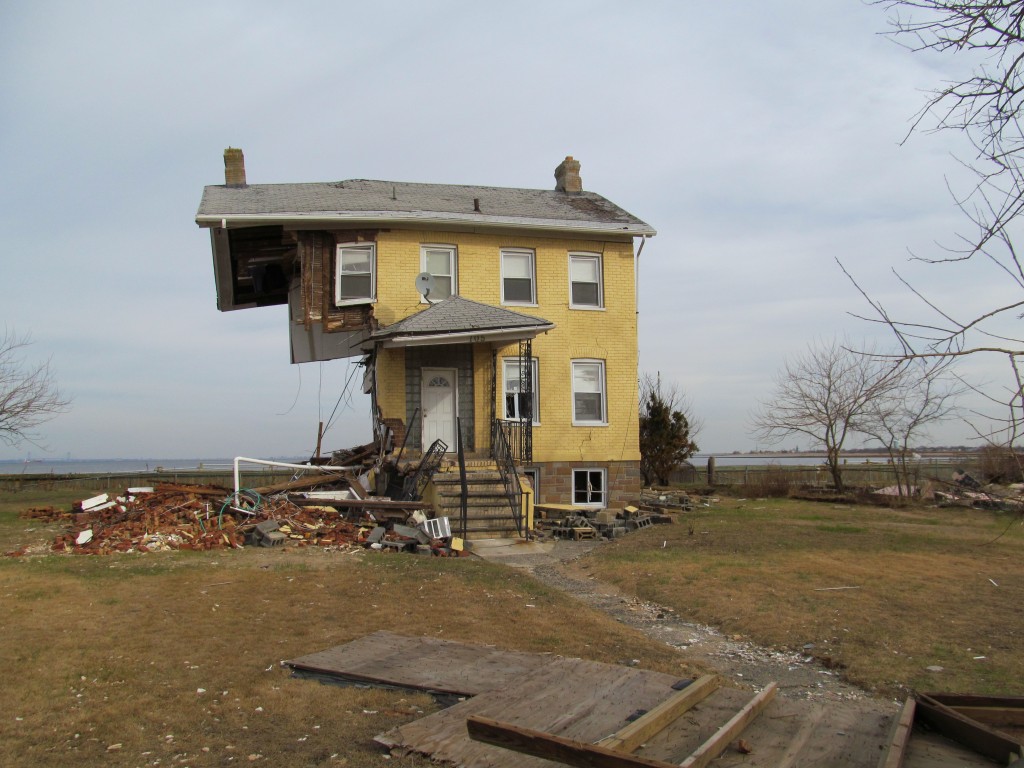 Six months before Hurricane Sandy, whose storm surge hit New York City on October 29, 2012, the decision was made to center NESEA’s 2012 BuildingEnergy conference on resilience. As BE approached, we all became more and more impressed with the smattering of resilience sessions and how they made the conference much more timely.
Sandy had really hit a lot of New York City hard, taking out entire neighborhoods, like Breezy Point, where fires spread from house to house even as water surged around their foundations. In Manhattan, which wasn’t hit nearly as hard as the outer boroughs, surge waters washed cars down the street at Peter Cooper Village, and water climbed onto the West Side highway, filling basements and in some places rising to more than three feet deep on the first floor. A major tunnel between Manhattan and Brooklyn, the Brooklyn Battery, filled with water. Live news reports said the water flowing into the tunnel smelled like oil. Of course it did: many of our buildings heat with oil, some of them with residual no. 6 oil, and the tanks are in the basements. My own home in Hell’s Kitchen was not affected, but my office was closed for a week. (more…)
Six months before Hurricane Sandy, whose storm surge hit New York City on October 29, 2012, the decision was made to center NESEA’s 2012 BuildingEnergy conference on resilience. As BE approached, we all became more and more impressed with the smattering of resilience sessions and how they made the conference much more timely.
Sandy had really hit a lot of New York City hard, taking out entire neighborhoods, like Breezy Point, where fires spread from house to house even as water surged around their foundations. In Manhattan, which wasn’t hit nearly as hard as the outer boroughs, surge waters washed cars down the street at Peter Cooper Village, and water climbed onto the West Side highway, filling basements and in some places rising to more than three feet deep on the first floor. A major tunnel between Manhattan and Brooklyn, the Brooklyn Battery, filled with water. Live news reports said the water flowing into the tunnel smelled like oil. Of course it did: many of our buildings heat with oil, some of them with residual no. 6 oil, and the tanks are in the basements. My own home in Hell’s Kitchen was not affected, but my office was closed for a week. (more…)



